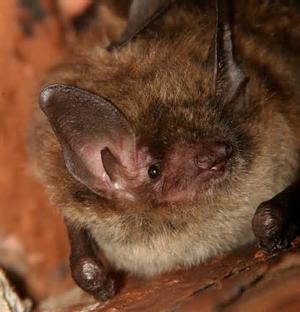Our Bats in Peril (2015)
Michigan Department of Natural Resources confirmed in April, 2014 confirmed a little brown bat afflicted with white-nose syndrome (WNS) in Dickson County. Four more bats in two other Michigan counties have been identified with the fungal malady. The disorder affects mostly muzzles and wings. The fungus engenders lesions which require the bats to usurp reserved fat stores. This forces bats to leave hibernacula in effort to replenish reserves. It is not only the bats' defenses attempting to heal their damaged bodies which sap necessary reserves another complication is that life sustaining water is lost through the infected areas and the bats may also require hydration. Almost invariably, too early in the season, it is still cold and there is little or no food to replenish reserves. They starve. Approximately 300,000 bats are known to live within the state of Michigan. It is estimated that 90% will die from the malady in a span of three to five years. This has been the unfortunate prognosis wherever the fungus has manifested. Due to their very social disposition and the close proximity in which bats live and hibernate in caves the highly communicable and deadly WNS is moving fast.
Sadly, this news was not unexpected in Michigan as scientists have been aware that reports from surrounding states had confirmed deaths due to the pandemic that initiates the deadly set of events in motion. It is clear disease is spreading quickly in all geographical directions from its initial discovery in New York state in 2006. As of April, 2014 twenty-seven states and five Canadian provinces have reported WNS bat deaths. One study headed by research biologist Sybill Amelon of the Forest Service has extrapolated “cumulative declines in regional relative abundance by 2011 from peak levels were 71 percent for little brown bats, 34 percent for tricolored bat, 30 percent in the federally-listed endangered Indiana bat, and 31 percent for northern long-eared bats.”
This malady is extremely bad news for the bats, of course. Though they are not considered cuddly and cute they are, nonetheless, a fascinating mammalian species. Two adaptations make them unusual: 1) bats fly, and 2) they employ sonar to pinpoint food. It cannot be stressed enough that they are also an extremely important element in a balanced natural order. Bats are a living, breathing pesticide. In 2012, the U.S. Fish and Wildlife Service projected nationwide the deaths of approximately 6,700,00 bats, a disheartening number. Other sources indicate the demise at 7,000,000 individuals. Had they lived these eating machines would have ingested in the vicinity of 1,320 metric tons of insects many of which are problematic for humans and plant health. That's a staggering 2,910,000 pounds of bugs.
Consequences of increasing numbers of insect pest populations enhance the likelihood of more mosquito-borne illnesses. And some mosquito borne tropical illnesses are migrating steadily northward as the climate warms. From an agricultural standpoint this means more crops damaged due to unchecked plant pests. Also implicit are increasing negative impacts to our forests already stressed by other invading threats, some partly due to accidental introduction, others via the catalyst of climate change.
The fungus, a member of the genus Geomyces, recently received a name change due to distinctions found through DNA sequencing. Formerly identified as Geomyces destructans, its new moniker is Pseudogymnoascus destructans. “This research represents more than just a name change,” according to Mylea Bayless, the director of Bat Conservation International, “Understanding the evolutionary relationships between this fungus and its cousins in Europe and North America should help us narrow our search for solutions to WNS.”
Another possible silver lining upon the dark clouds at dusk which once were the backdrop to vibrant bat populations are that researchers have discovered closely related fungi to WNS, so new that many are still unnamed, that do not cause any disease. Through elemental comparison of DNA characteristics between the infectious species and its non-disease causing relatives may illuminate which vector(s) in the makeup of WNS is leading to deadly results. As Dr. Daniel Lindner, a research plant pathologist at the U.S. Forest Service's Northern Research Station in Madison, WI shared, “Identification of the closest known relatives of this fungus makes it possible to move forward with genetic work to examine the molecular toolbox this fungus uses to kill bats. Ultimately, we hope to use this information to be able to interrupt the ability of this fungus to cause disease”.
And one more hopeful sign is that according to Ms. Bayless of Bat Conservation International is that WNS appears increasingly to be an invasive species. Bayless stated recently, “Its presence among bats in Europe, where it does not cause mass mortality, could suggest hope for bats suffering from this devastating wildlife disease. Time will tell.” So, perhaps there are natural defenses within European bats which may be copied and transferred to our New World populations which may help to slow decline, stabilize populations and set a baseline from which species may rebound. We must support the largely and in most instances the completely government-funded work of the researchers. But we are a long way off from stemming this devastating syndrome. Presently, we can only hope.
penned by Wayne Paquette for The Potting Shed, Villager Newspapers, January 2015
